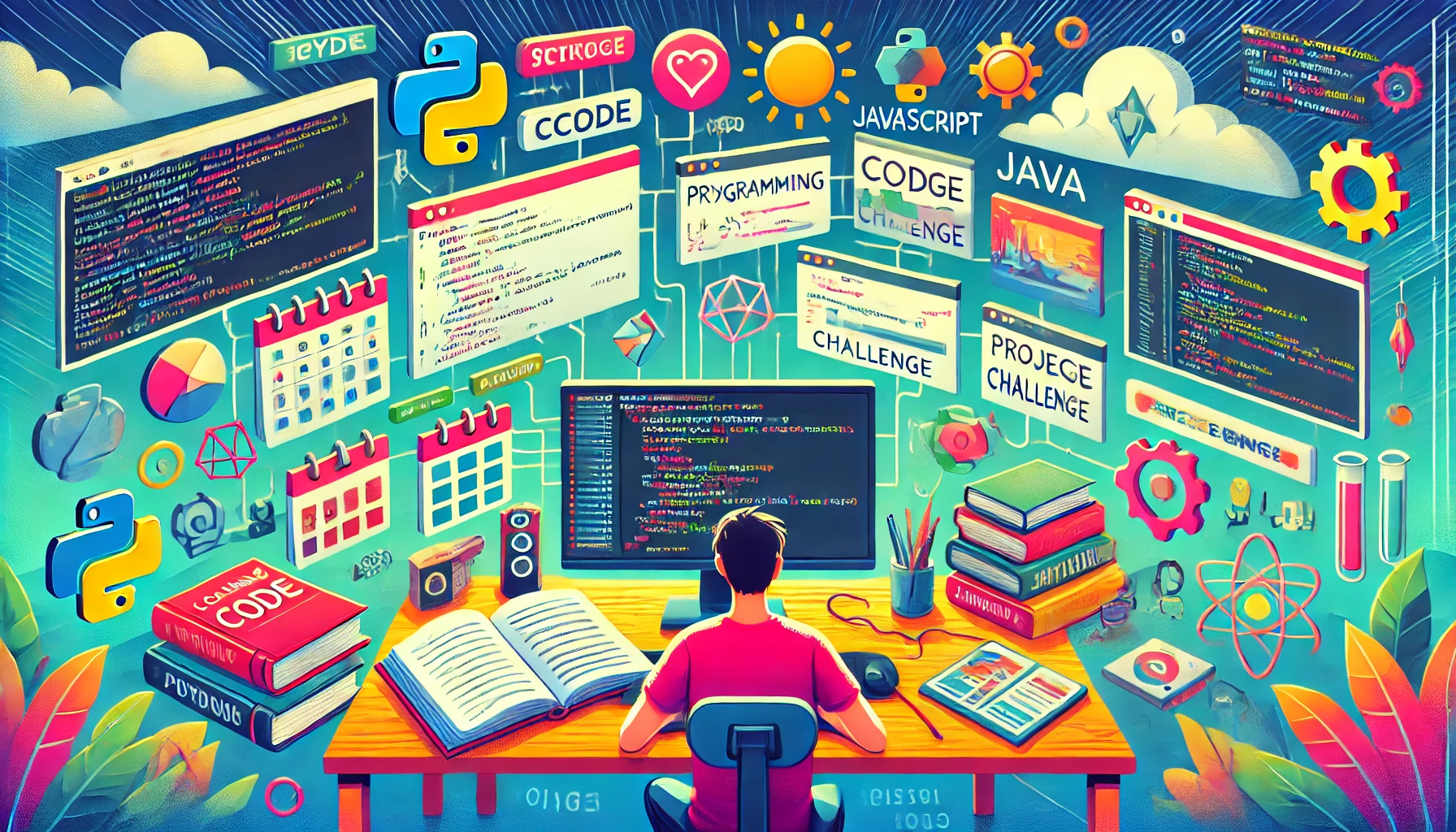Initially, it’s imperative to comprehend the essence of programming, which essentially involves crafting directives for computers to accomplish specific tasks. These directives are expressed through a multitude of programming languages, each characterized by unique syntax and practical applications.
Core Concepts to Master:
- Algorithms: Defined sequences for problem-solving.
- Data Structures: Systems to arrange and preserve data.
- Variables: Mutable storage points for data within programs.
- Control Structures: Devices that guide the sequence of operations, such as loops and conditional statements.
- Functions/Methods: Dedicated snippets of code for particular functions.
Selecting an Appropriate Programming Language
The choice of programming language should align with your aspirations and interests. Consider these accessible languages for novices:
- Python: Renowned for its clarity, Python is ideal for novices and is extensively utilized in web development, data analytics, and AI.
- JavaScript: Crucial for crafting dynamic web pages, and its versatility extends to server-side development via Node.js.
- Java: A broad-purpose language employed in web and mobile app development, notably on Android, as well as in expansive business systems.
- Ruby: Praised for its graceful syntax, Ruby is frequently employed alongside the Ruby on Rails framework for web projects.
- Scratch: A graphical language tailored for beginners, particularly children, to grasp programming principles sans traditional code writing.
Establishing Your Development Workspace
To initiate coding, you must arrange an adequate workspace. Essential components include:
- Text Editor/IDE: Software such as Visual Studio Code, PyCharm, or Atom will facilitate code writing and organization.
- Compiler/Interpreter: Some languages need a compiler or an interpreter to execute code, like Python’s interpreter or C’s compiler.
- Version Control System: Systems like Git are instrumental in monitoring code modifications and enabling collaborative work.
Engaging with Interactive Learning Platforms
Platforms that offer interactive learning can be especially beneficial for novices by providing hands-on practice and instant feedback. Noteworthy platforms include:
- Codecademy: Delivers interactive coding tutorials in a variety of languages.
- Coursera: Features educational content from leading academic institutions covering extensive programming subjects.
- Udacity: Recognized for comprehensive courses in fields such as web development and data science.
- Khan Academy: Provides interactive programming lessons aimed at younger audiences.
Project Implementation
Applying your learning through project work is vital in reinforcing your abilities and obtaining tangible experience. Begin with straightforward projects, progressively advancing to more intricate ones. Project suggestions for starters:
- Personal Website: Utilize HTML, CSS, and JavaScript to forge a portfolio displaying your creations.
- Simple Game: Forge a basic game like Tic-Tac-Toe or Snake with Python or JavaScript.
- Calculator Creation: Craft a basic calculator with essential arithmetic operations.
- Task Automation: Script routine task automation, such as file renaming or data scraping from websites.
Joining a Programming Network
Integration into a coding community can offer encouragement, inspiration, and collaborative prospects. Here’s how you can get involved:
- Online Forums: Participate in platforms like Stack Overflow, Reddit’s r/learnprogramming, or GitHub discussions.
- Local Gatherings: Engage in local coding groups, hackathons, and educational events to connect with fellow learners and experts.
- Social Media: Network with notable coders on Twitter, join Facebook groups, and engage in LinkedIn dialogues.
Commitment to Regular Practice
Consistent practice is vital for mastering programming. Allocate daily or weekly time for coding exercises, and use websites like LeetCode, HackerRank, and CodeSignal to sharpen your problem-solving abilities.
Studying Documentation and Literature
Accustom yourself with the official guides for your chosen programming languages and tools. These documents are a priceless asset for grasping syntax, libraries, and frameworks. Moreover, consider reading instructive books such as:
- “Automate the Boring Stuff with Python” by Al Sweigart: An excellent resource for beginners to apply Python in practical projects.
- “Eloquent JavaScript” by Marijn Haverbeke: A superb primer on JavaScript and coding principles.
- “You Don’t Know JS” by Kyle Simpson: Offers an in-depth understanding of JavaScript, suitable for both novices and seasoned learners.
Soliciting Feedback and Embracing Errors
Mistakes are integral to the learning curve; don’t shy away from them. Seek critique on your work from colleagues, mentors, or digital forums. Code critiques and collaborative coding can yield valuable insights, enhancing your coding methods.
Staying Informed and Advancing Your Knowledge
Programming is an ever-evolving domain. Keep abreast of the latest industry trends, languages, and frameworks through tech blogs, webinars, and advanced educational courses. Continuous learning ensures your skills stay pertinent and opens up fresh prospects.
Embarking on the path to acquire programming skills from the ground up promises a stimulating and gratifying experience. Gaining a solid grasp of the fundamental concepts, selecting an appropriate programming language, establishing your workspace, and making use of dynamic learning platforms will lay the cornerstone for your development. Dedicating time to hands-on projects, becoming part of developer networks, and consistent practice will significantly sharpen your abilities. It is essential to bear in mind that steadfast dedication and an ongoing pursuit of knowledge are crucial for mastery in the field of programming. Wishing you a delightful coding adventure!
